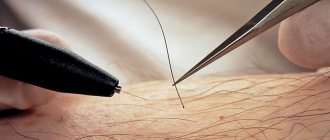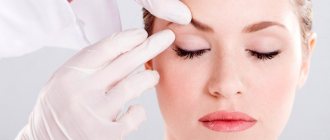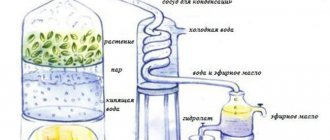What could be the cause of the disease?
- Genetic mutations that cause a structural change in epithelial cells, as a result of which they are transformed into epidermal cells.
- Symptoms can be caused by awakened hair follicles, and this is a real sign of malignant tumors. Often, this disease is precisely a warning about the possibility of oncological processes starting in the future. It has been statistically proven that in 90% of patients with hypertrichosis, tumors are detected after some time.
- Hypertrichosis can also be a side effect from the use of various medications. Such drugs include, for example, streptomycin, penicillin, corticosteroids, psoralen, etc.
- Also, hypertrichosis sometimes signals the presence of skin infectious diseases (for example, dermatomycosis), traumatic brain injuries, and epidermolysis bullosa.
- Anorexia nervosa and exhaustion
- Injuries, hypothermia, and scars cause the formation of local hypertrichosis.
- Regular careless facial depilation, as a result of which previously soft hairs become coarser and darken over time.
- Unhealthy bones (for example, spina bifida)
- Mental disorders (for example, epilepsy)
Cosmetic procedures
Various methods are suitable for hair removal - shaving, plucking, waxing, chemical depilatory agents, electric and laser devices, as well as intense pulsed light (IPL).
Shaving is the simplest method, but also the shortest in terms of duration of action - hairs begin to grow back literally the next day. After plucking, they appear on average after 2 weeks, after waxing - after 2–6 weeks. Chemical peeling disrupts the protective properties of the skin, so it is only suitable for small areas of the body. The duration of its effect is about 1 week.
If the hair does not bother the patient too much, it can not be removed at all, but bleached.
Drug therapy
Unlike hirsutism, the pathogenesis of hypertrichosis does not involve the influence of androgens. Therefore, antiandrogen treatment for hypertrichosis will be ineffective. A promising method is the topical use of eflornithine, an inhibitor of the enzyme ornithine decarboxylase, which is involved in hair growth.
Hardware techniques
The most popular methods of hair removal for hypertrichosis are laser and photoepilation. The principle of operation of these methods is selective heating of the hair when it absorbs an intense light flux, followed by destruction of the hair follicle. For photoepilation, IPL devices are used; unlike laser procedures, IPL procedures are more affordable, but usually require a longer time for each procedure. Hair removal lasers are the most convenient and effective tool today for removing unwanted hair due to hypertrichosis. Among lasers, diode lasers of 800-810 nm are most widely used, since they are universal for the treatment of hypertrichosis in patients with any phototype.
Questions from our users:
- eyelash hypertrichosis
- hypertrichosis treatment in men
- hypertrichosis laser treatment
- hypertrichosis causes congenital
How does hypertrichosis manifest?
Some differences in symptoms can be found in women and men. In the former, hypertrichosis is characterized by increased hairiness in places where it should not be. This takes into account race and age characteristics. For example, excess hair growth on the legs of Mediterranean women is quite common, but this same manifestation in young Asian women already indicates possible hypertrichosis.
Male hypertrichosis, in the form of abundant hair growth on the back, face or legs, is essentially an atavism that manifests itself already in newborns.
The disease in children is often accompanied by an abundance of birthmarks. Fused eyebrows are also evidence of limited hypertrichosis.
Etiology and pathogenesis
A. Congenital hypertrichosis
- Congenital generalized hypertrichosis:
- Congenital universal hypertrichosis is a rare autosomal dominant disease first described in the 16th century. Its cause is considered to be a mutation (pericentric inversion) of chromosome 8 - inv(8)(p11.2q22). Some researchers suggest X-linked inheritance of the disease, because in one Mexican family, the diseased father passed on the mutant gene to all four daughters, but to none of the nine sons.
- Prepubertal hypertrichosis - In 1988, scientists described clinically healthy children with generalized hypertrichosis that gradually worsened from birth. This condition is common in people from Mediterranean and South Asian regions and is sometimes called "racial hirsutism." Although, unlike true hirsutism, prepubertal hypertrichosis is not associated with the action of androgens.
- Congenital vellus hypertrichosis is a disease of unknown etiology and pathogenesis. An autosomal dominant mode of transmission has been suggested, but some cases of the disease do not support this. Any genetic pathology leading to the development of congenital vellus hypertrichosis has not been established; There are no endocrine changes in the body.
- Congenital focal hypertrichosis - occurs against the background of other congenital pathologies: congenital melanocytic nevus, Becker's nevus, spinal dysraphism (incomplete closure of the spinal canal of the spine), etc.
B. Acquired hypertrichosis
- Acquired generalized hypertrichosis:
- Drug-induced hypertrichosis - some drugs can cause excess hair growth throughout the body (phenytoin, cyclosporine A, minoxidil, etc.).
- Secondary hypertrichosis develops against the background of various acquired diseases: hepatic porphyria, juvenile dermatomyositis, HIV infection (AIDS), celiac disease, etc.
- Acquired vellus hypertrichosis occurs against the background of malignant pathology. Most often this is rectal cancer, somewhat less often - cancer of the gallbladder, pancreas, bladder, uterus, ovaries, breast, bronchi, as well as lymphoma and leukemia.
- Acquired focal hypertrichosis - develops against the background of repeated friction or pressure in a certain area of the body, as well as a chronic inflammatory process. Focal hypertrichosis is common, although it is poorly described in the literature. This is due to the fact that patients usually do not seek help because local hair growth does not bother them or is easily removed by shaving/depilation.
Treatment of hypertrichosis at Es Clinic
The most reliable and best method is hair removal. Moreover, independent hair removal can only lead to progression of the disease. Children's hypertrichosis is eliminated by bleaching or special creams.
Since the main cause of hypertrichosis is a genetic mutation, studying the genome is undoubtedly important. Research and the search for reliable methods of correction will help develop additional treatment methods, which will have a positive impact on the health of future generations.
This information is provided for informational purposes only and should not be used for self-treatment.
Causes of hypertrichosis in a child
The clinical classification of hypertrichosis distinguishes two forms of the disease: congenital and acquired. The source of hair growth in both cases is a mutation of the epithelium - the structure of the tissue changes, which results in increased nutrition of the hair follicles in a separate area of the skin.
The key factor in the development of congenital hypertrichosis is hereditary disorders - atypical hair growth is passed on to the baby from the parents. Sometimes mutated genes appear after a generation and are passed on to children from grandparents.
Hormonal disruptions in the body of the expectant mother during gestation have a significant impact on the condition of the newborn. Thus, endocrine changes can provoke increased hairiness on the child’s abdomen and chest.
Risk factors after the birth of a baby are:
- oncological diseases;
- psychosomatic disorders;
- infections;
- mechanical damage to the skin;
- long-term exposure to medications.
Family with hypertrichosis
- The best known familial case of hypertrichosis are members of the Gonsalvus family , which lived in the 16th century. His father, Petrus Gonsalvus, was perceived as a monkey-man from childhood and it was in this capacity that he was taken as a servant to the French king Henry II at the age of 10. He married an ordinary woman who was not susceptible to hypertrichosis, but of the seven children born in this marriage, four also inherited the disease.
- Their portraits were painted by artists of that time; the best minds of France and Italy argued about the causes of the disease and its heredity.
- Another family is the Aceves, who currently live in Mexico. The most famous is Jesus, commonly called Chewie. He, like his sister and cousins, were born with hypertrichosis. Chui himself became the father of three daughters, who were born to different women, and at the same time, all the girls inherited their father's disease.
Family
- This chain began with Jesus’ great-grandmother, and during this time, 30 members of the Aceves family were born and live with a similar diagnosis. A film was made about the family - and this is not surprising, because out of 50 people who have had hypertrichosis recorded in the entire history of registration of cases of the disease, 30 are members of the Aceves family.
From our articles you will learn about the syndrome:
- Life deferred
- Excellent student
- Carpal tunnel syndrome
- Tourette's
- Morris
A little endocrine gynecology. Hormonal type (phenotype) of a woman
Murzaeva Irina Yurievna
Endocrinologist, Preventive Medicine Doctor
July 12, 2015
Hormonal type, or rather phenotype, is the structure of the female body depending on the predominance of a particular sex hormone in the body. With this information, you can better understand the characteristics of your body, select hormonal contraception and calculate its side effects.
In total, 3 female phenotypes were previously identified, but I would still say that there are 5 of them.
Etrogen phenotype (type 1), balanced phenotype (type 2), progesterone phenotype (type 3) was previously considered progesterone/androgenic, but based on clinical observations, I would classify the androgen phenotype as a separate form (type 4). In addition, the hypoestrogen type is classified into a separate group (with a lack of etrogen).
Estrogen phenotype (i.e. hyperestrogen phenotype): scientific fat type, endomorphic. The predominant hormone is estradiol.
These are women with a “pear” figure type, with pronounced development of the hips and mammary glands, which makes them prone to the phenomena of mastopathy and fibroadenomatosis of the breast. Prone to obesity, with the formation of gallstone disease. They are characterized by good skin, without acne, but a little dry, thin, sometimes curly hair on the head.
Hirsutism (hair growth is active on the face, abdomen, back, thighs) and hypertrichosis (hair growth is more active on the forearms and lower legs) are not typical for them - this applies to Russian women, for women of other nationalities - it depends on the severity of hair growth in the family - constitutional hypertrichosis may be present.
Women of this type are of average height, with a high timbre of voice and a “pretty appearance.” With a tendency to PMS (like “hysteria” and tearfulness). The menstrual cycle is often regular or delays do not exceed 60 days (that is, disorders such as progestron deficiency - hypoluteinism), the cycle can be heavy, with a tendency to endometrial hyperplasia in perimenopause - in the presence of obesity.
Taking Duphaston is well tolerated (they have a “classic type of reaction” to it - with the onset of menstruation 3-6 days after discontinuation of the drug).
By nature, they are more “female lovers”, active (more choleric), in need of constant male attention.
Prone to uterine fibroids, the formation of follicular cysts and varicose veins. They get pregnant quickly, but pregnancy can be complicated by a lack of progesterone and threats of miscarriage. COCs with gestodene, desogestrel, levonogestrel (Mikrogynon, Lindinet-20, etc.) are well suited for them. They may have hot flashes for a long time after menopause, sometimes all their lives.
Balanced phenotype , a kind of “Ideal woman” ;). Estradiol/progesterone are balanced according to the phases of the cycle.
The body structure is proportional, the skin is clean, with normal moisture and oil content. The hair is thick and dense. Menstruation is regular, PMS is not typical or is only slightly expressed. Soprano voice. Hirsutism is uncharacteristic, there may be slight hypertrichosis - more constitutional. They get pregnant and carry to term without problems.
The most suitable COCs are three-phase COCs with desogestrel and gestodene. (Tri-Mercy, Marvelon, Lindinet-20, etc.)
Progesterone phenotype. Scientifically also called bone, ectomorphic. Progesterone predominates.
These are women with the following body type: both shoulders and hips are developed evenly, “sports body type”, subcutaneous tissue is distributed evenly, sometimes according to the android (male) type (this is for obesity, that is, the deposition of fat masses in the upper abdomen and back ). Skin prone to oiliness (oily seborrhea) of both the face and scalp. Acne happens, sporadically.
The voice is often low-timbre, like a mezzo-soprano, with a tendency towards contralto (if the woman is tall). There is slight hypertrichosis, especially in tall women, and hirsutism (depending on nationality).
Height is usually above average (more dependent on genetic characteristics), the mammary glands are moderately developed, with a predominance of adipose rather than glandular tissue. Therefore, they are less prone to mastopathy. Menstruation is often scanty or very. short or long, up to 7 days. PMS happens, but with a tendency to melancholy and tearfulness, swelling.
Taking duphaston (according to indications) can increase the manifestations of PMS and swelling. The reaction to Duphaston may be “non-classical” - menstruation does not begin 7 days after the course of the drug (caused by a preliminary lack of estrogen). By nature they are more sanguine, the type of “woman-mother” - with the need to care for others.
She often shows sexual activity only in the presence of a love object; in her absence, she can be sexually inactive, which distinguishes her from women of the estrogen type. Therefore, the menstrual cycle is often irregular in women of the progesterone type; sometimes there is a tendency that if there is regular sexual intercourse, the menstrual cycle is regular (the production of estrogen is stimulated), if not, the cycle is irregular. Therefore, she does not get pregnant right away - after a certain time of regular sexual relations, she bears without threats (this is, of course, theoretically, based on the activity of the hormone progesterone), but she is prone to large weight gains!
Prone to insulin resistance and weight gain, also after childbirth. COCs with dienogest and drospirenone are good options. (Yarina, Jess, Bonade, etc.)
Androgenic phenotype. Muscular or mesomorphic.
A woman's appearance depends on the predominance of androgens (male hormones) from the ovaries or adrenal glands.
Adrenal hyperandrogenism (dominated by 17-OH progesterone, androstenedione or DHA-S) is a tall woman, asthenic (thin), “muscular type”, with poorly developed subcutaneous tissue. “Boyish body type”, the mammary glands are poorly developed, the skin tends to be oily, and acne is not pronounced. An example is modern super-models.
Sexually moderately active, does not get pregnant right away, and carries threats of miscarriage. The menstrual cycle is often irregular. The voice is low.
A woman with a predominance of ovarian androgens (or with mixed secretion, a predominance of total/free testosterone) is short in stature, with a pronounced shoulder girdle, oily skin and acne, hirsutism and hypertrichosis. The mammary glands are moderately developed. The voice is low, mezzo-soprano type. They get pregnant with difficulty and carry threats. Sexually very active (testosterone is the basis of the hormone of sexual activity). We are not prone to PMS because of irregular ovulation, which is the “key” to PMS.
If they are obese, often with the phenomenon of hyperinsulenism and impaired carbohydrate metabolism, they can lose weight well with properly selected physical activity, but there is a risk of “pumping up” the muscles. Behavior of women like “their boyfriend”.
An example is women with PCOS syndrome. COCs with cyproterone acetate, drospirenone and dienogest are good options. (Diana-35, Yarina, Klaira... etc.).
Hypoestrogenic phenotype - women are either tall or short (depending genetically), infantile in structure - small breasts, disproportionately long arms and legs, thin, “parchment” skin, easily tired. PMS is not typical. The menstrual cycle is disrupted up to amenorrhea - delays of up to 6-12 months. Menstruation is painful. Behavior of a “teenage girl”. The voice is high, poor in overtones. Libido is sharply reduced or absent if there is also a lack of androgens. Getting pregnant is problematic. An example is girls with anorexia.
Indicated: hormone replacement therapy, triphasic COCs, COCs with levonogestrel.
A combination of several phenotypes is possible.
By 2011-2015, information appeared that during perimenopause a 6th phenotype can also be formed;): androgen deficiency (according to Apetov S.S.) the level of androgens in the adrenal glands decreases, which also has its consequences - a decrease in muscle strength and endurance, scarcity of axillary and pubic hair growth, hair loss on the head, gradual disproportionate weight gain in the waist area. A sharp decrease in libido. Correction of these phenomena may require hormone replacement therapy.
According to information obtained from a clinical study that included 300 women, type 1 of women predominates.
*In the process of writing, 6 classifications were analyzed.
Important! Message from the site administration about questions on the blog:
Dear readers! By creating this blog, we set ourselves the goal of giving people information on endocrine problems, diagnostic methods and treatment. And also on related issues: nutrition, physical activity, lifestyle. Its main function is educational.
Within the framework of the blog, in answering questions, we cannot provide full-fledged medical consultations; this is due to both the lack of information about the patient and the doctor’s time spent in order to study each case. Only general answers are possible in the blog. But we understand that not everywhere it is possible to consult with an endocrinologist at your place of residence; sometimes it is important to get another medical opinion. For such situations, when a deeper dive and study of medical documents is needed, at our center we have a format for paid correspondence consultations on medical documentation.
How to do it? Our center’s price list includes a correspondence consultation on medical documentation, costing 1,200 rubles. you can send scans of medical documents, a video recording, a detailed description, everything that you consider necessary regarding your problem and questions to which you want answers. The doctor will see if the information provided can give a full conclusion and recommendations. If yes, we will send the details, you will pay, and the doctor will send a report. If, based on the documents provided, it is impossible to give an answer that could be considered as a doctor’s consultation, we will send a letter stating that in this case, absentee recommendations or conclusions are impossible, and, of course, we will not take payment.
Sincerely, Administration of the Medical
Seeing a doctor
Treatment of hypertrichosis is carried out by a dermatologist. Contacting a specialist is justified if abnormal hair growth persists during the first weeks of the baby’s life. After the baby is born, the medical team conducts an initial examination, which shows the absence or presence of a connection between hypertrichosis and other diseases.
In the absence of congenital pathologies, abnormal hair growth in certain areas of the skin is treated for aesthetic reasons: with age, a child may develop complexes in the perception of his own body. Parents should take the therapy as responsibly as possible. Self-treatment or removal of abnormal hair using tweezers and razors can lead to complications. Thus, a damaged nevus degenerates into a malignant formation.
The combination of hypertrichosis with other developmental pathologies requires treatment of the underlying disease. After the child’s hormonal levels are equalized, the atypical hairline is subjected to standard treatment under the supervision of a dermatologist. Our clinic carries out a full cycle of diagnostic and therapeutic procedures for hypertrichosis in children. The pediatric department is equipped with all the necessary equipment, with the help of which dermatologists completely remove abnormally growing hair from a child’s skin.









